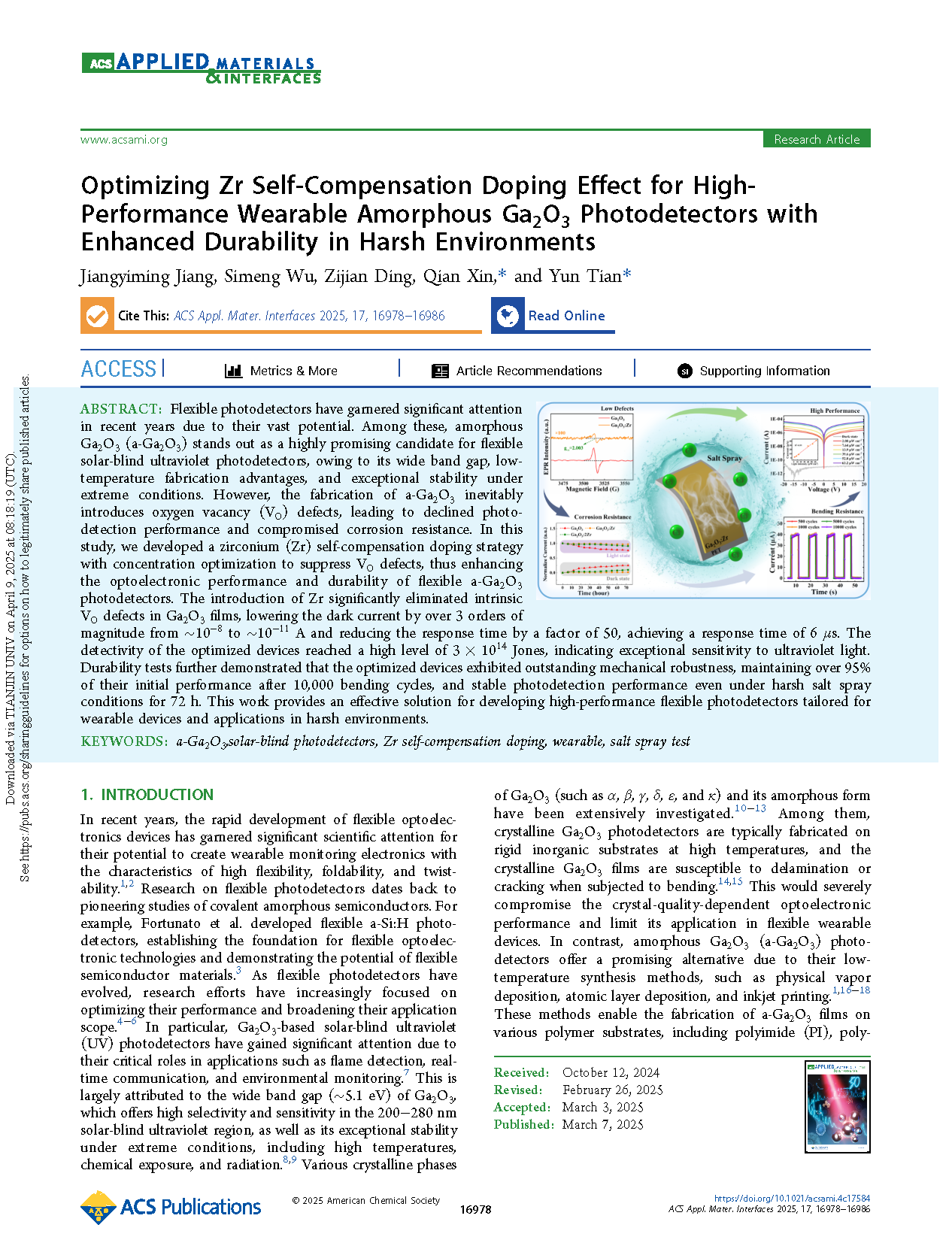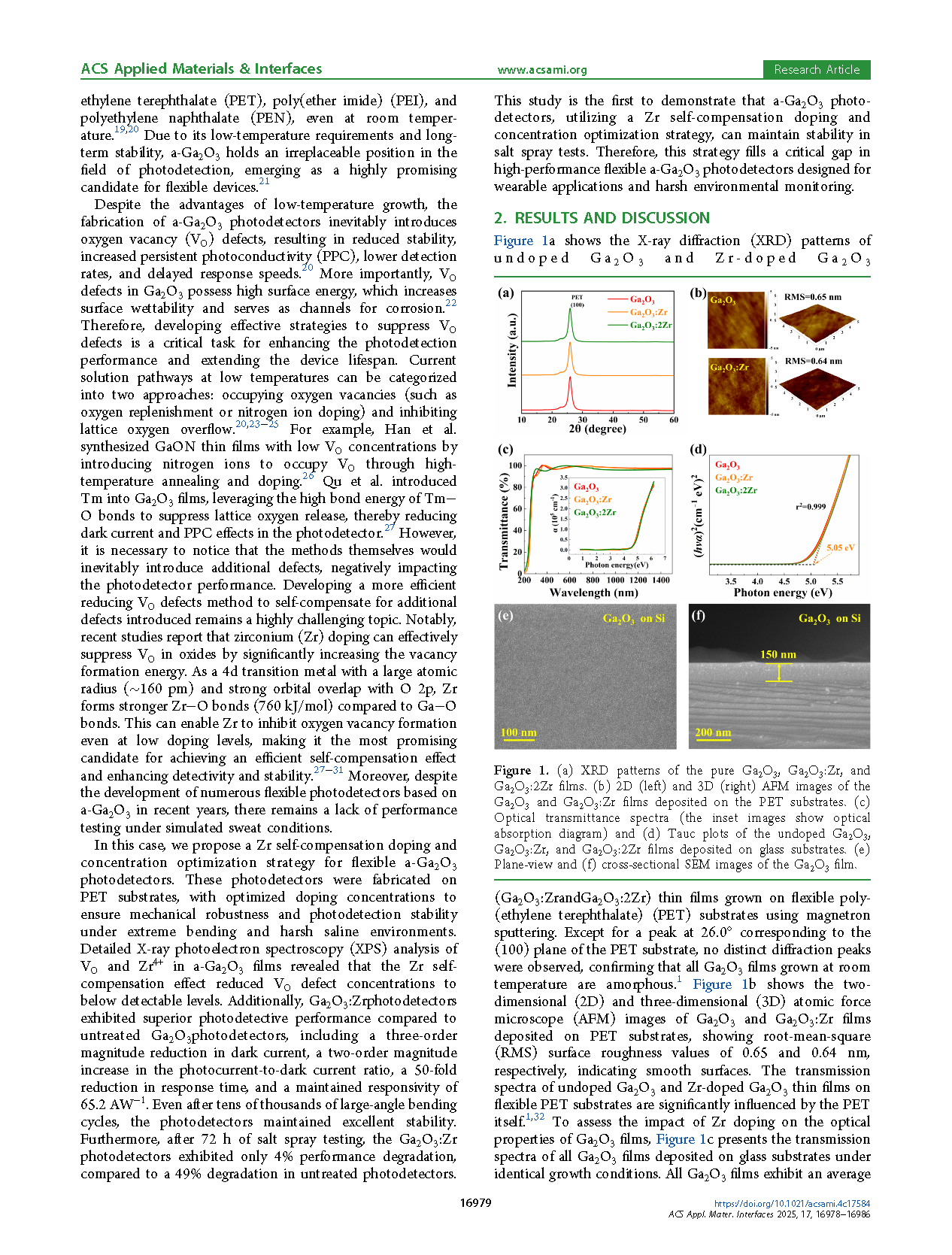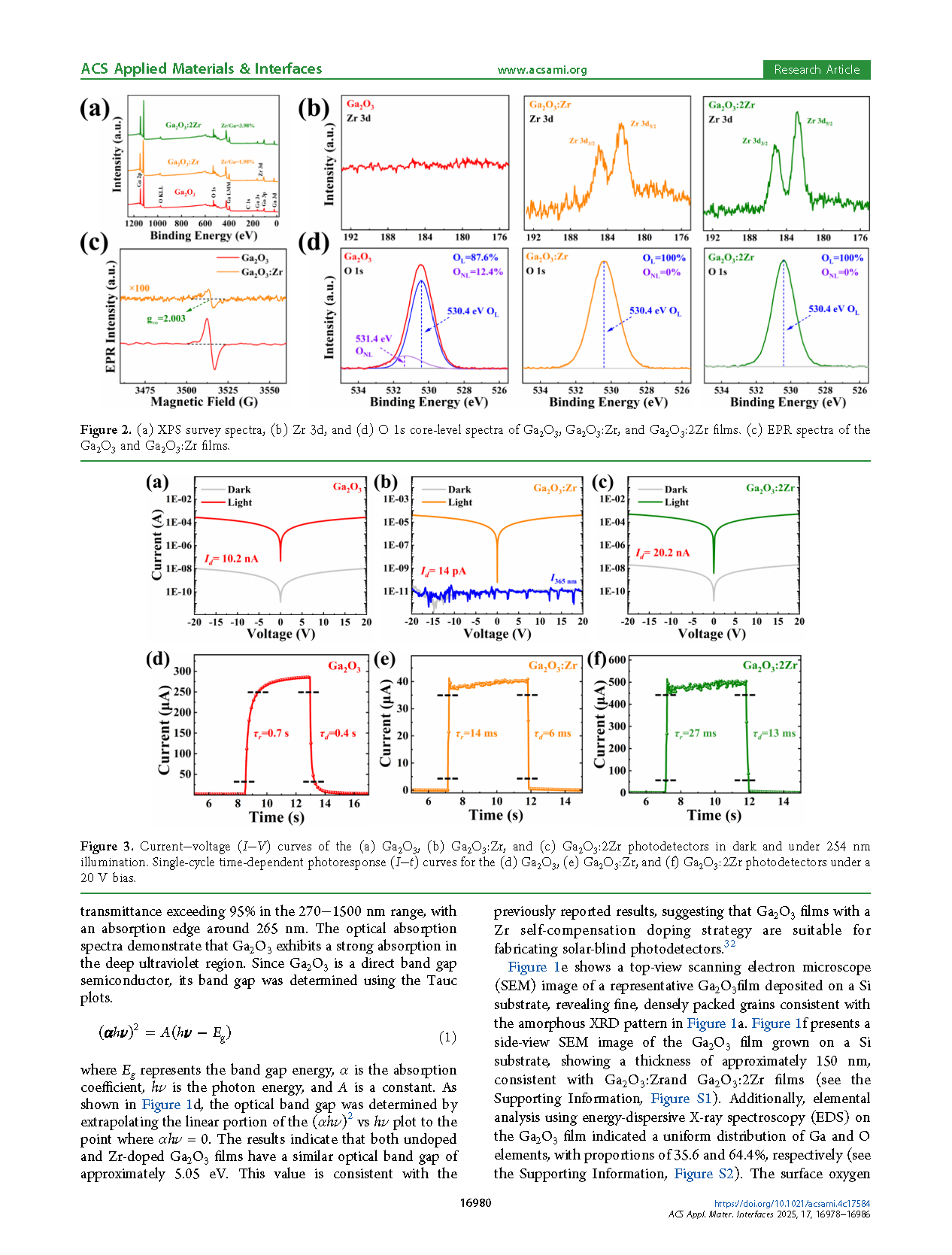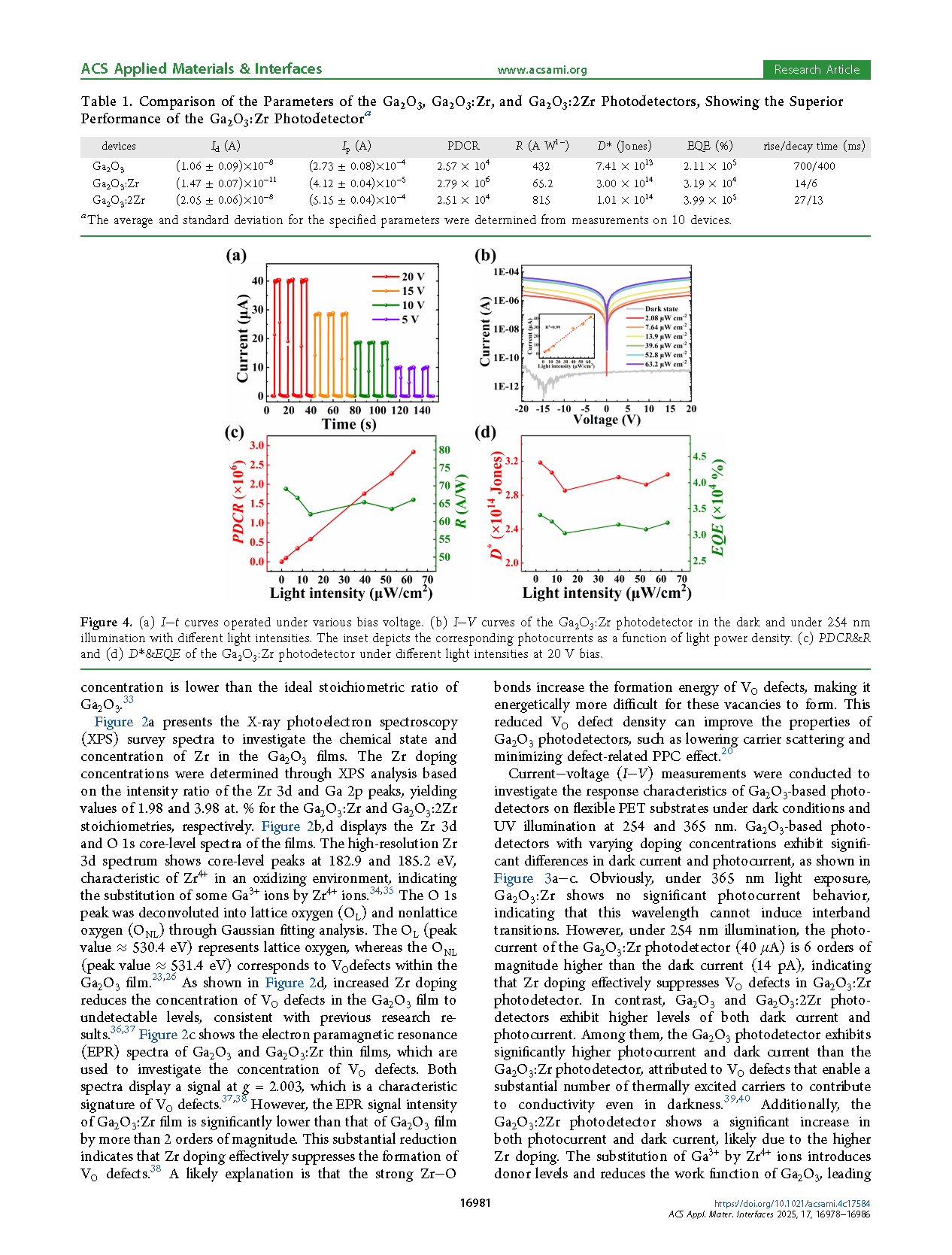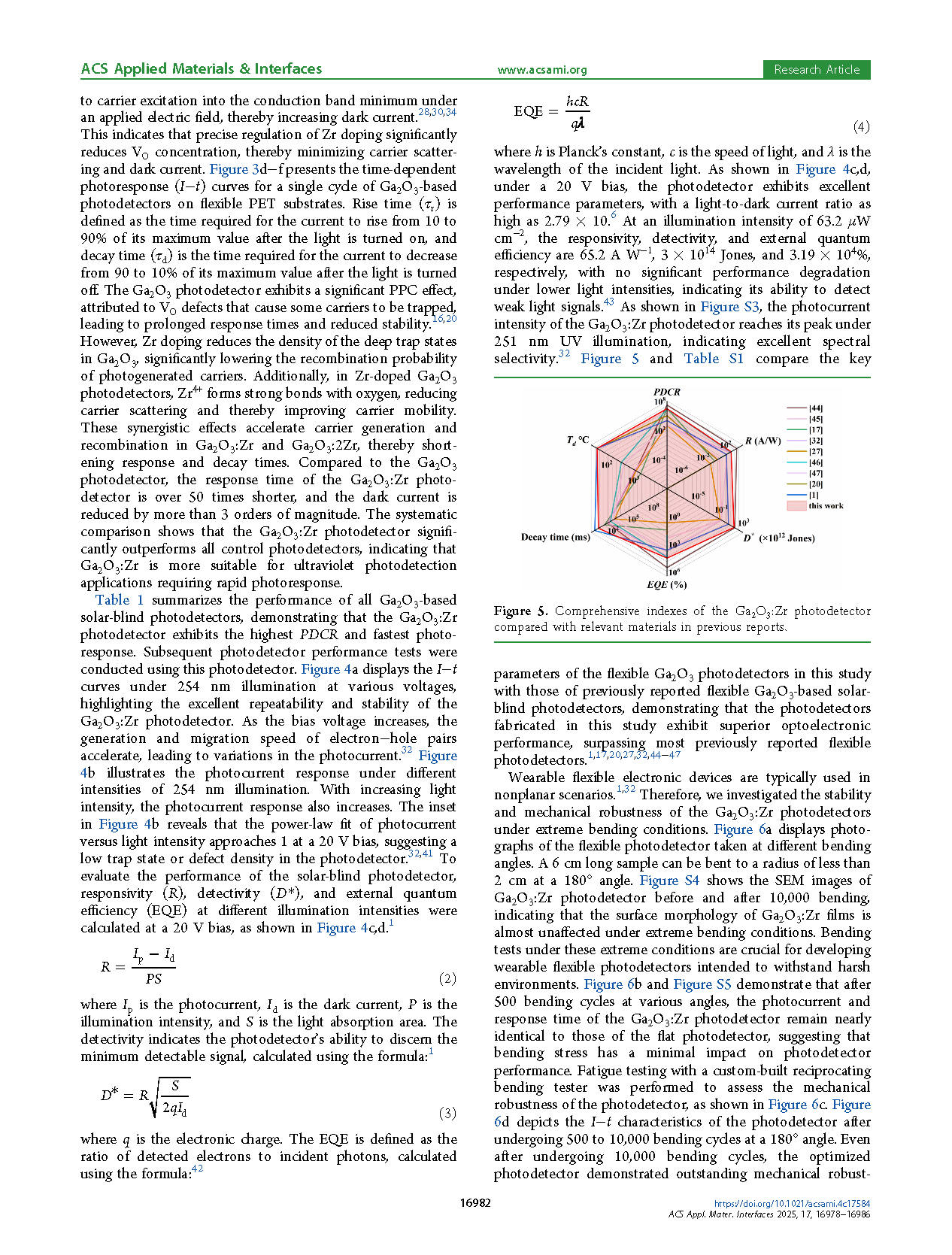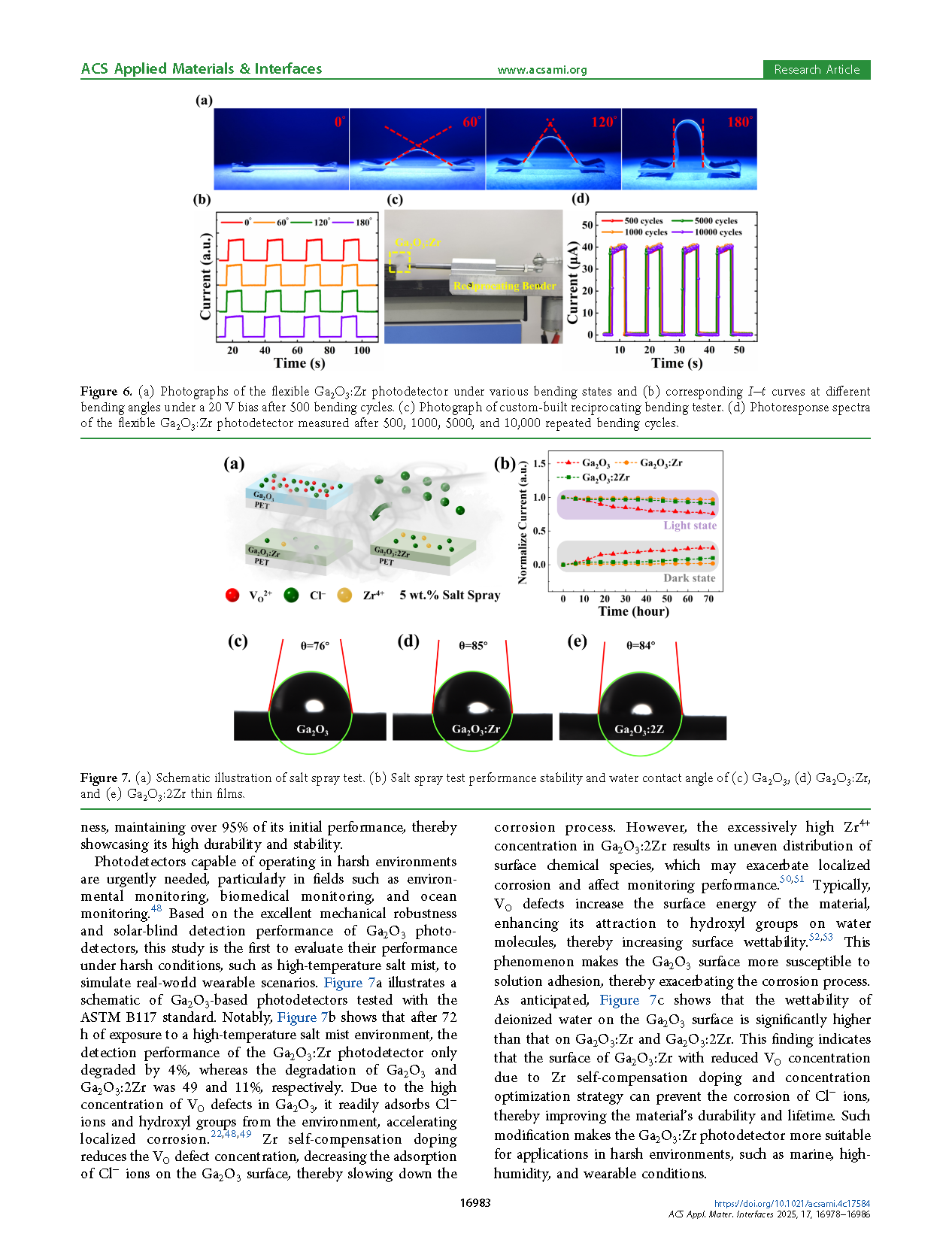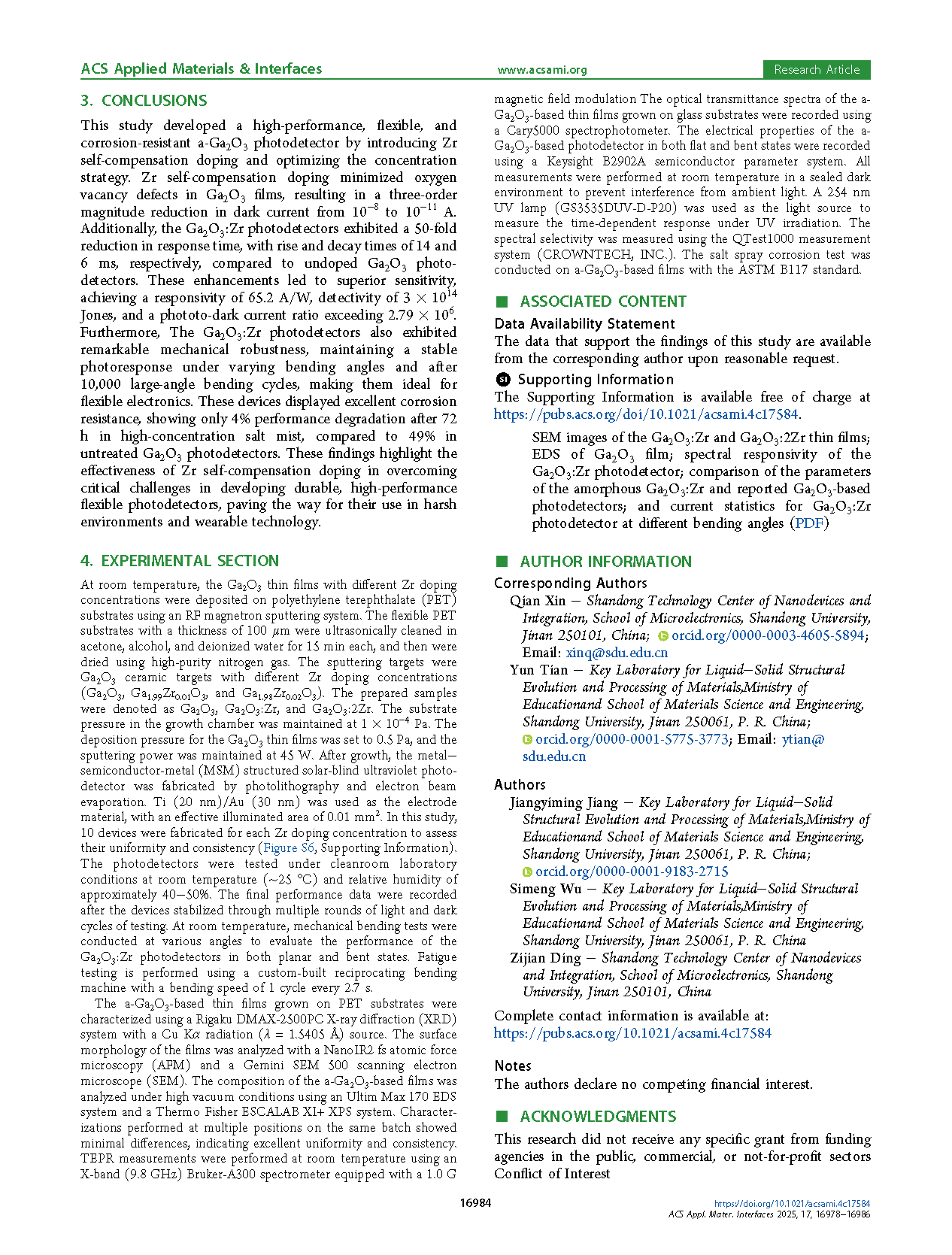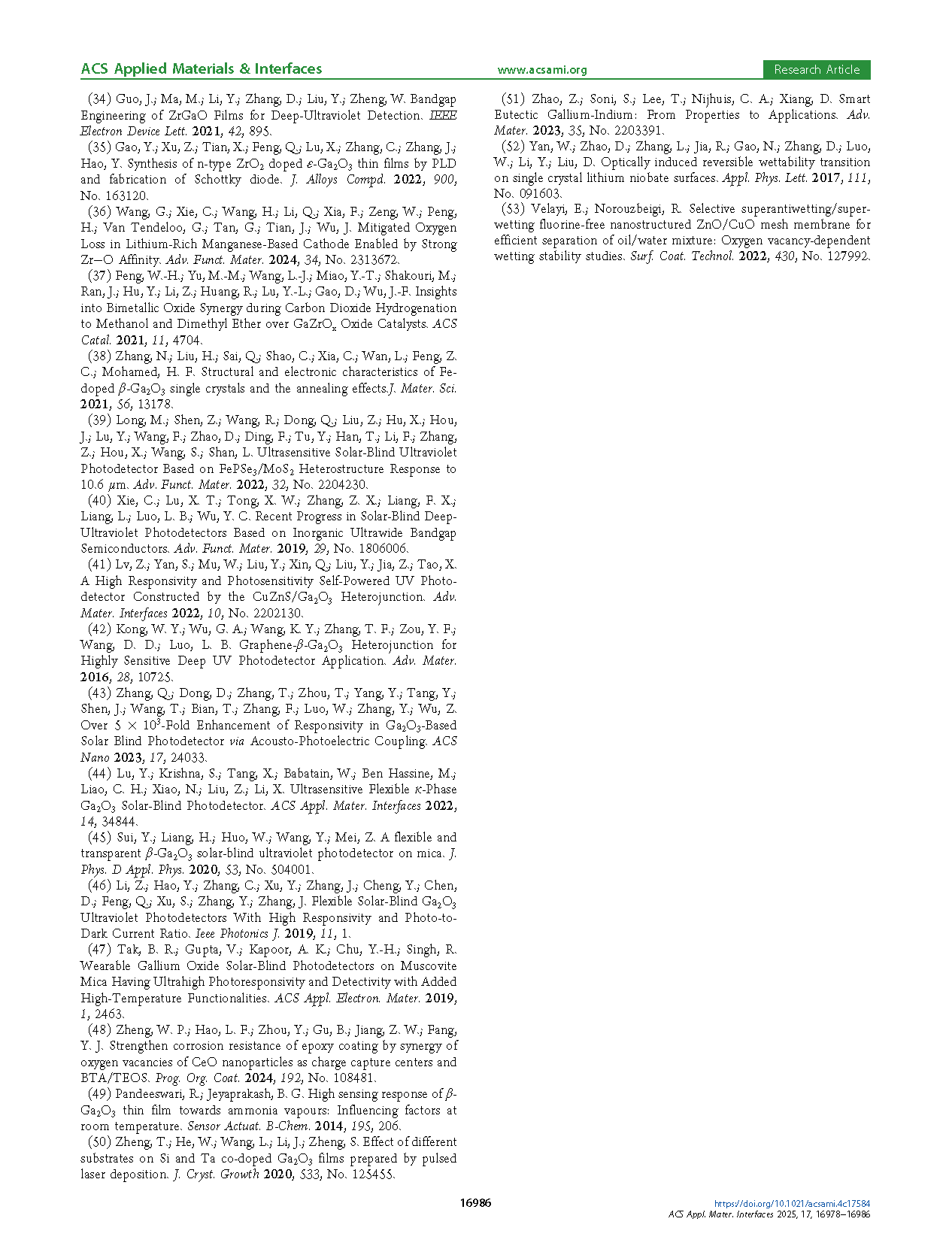
【Domestic Papers】Optimizing Zr Self-Compensation Doping Effect for High-Performance Wearable Amorphous Ga₂O₃ Photodetectors with Enhanced Durability in Harsh Environments
日期:2025-04-18阅读:402
Researchers from the Shandong University have published a dissertation titled "Optimizing Zr Self-Compensation Doping Effect for High-Performance Wearable Amorphous Ga2O3 Photodetectors with Enhanced Durability in Harsh Environments" in ACS Applied Materials & Interfaces.
Background
In recent years, the rapid development of flexible optoelectronics devices has garnered significant scientific attention for their potential to create wearable monitoring electronics with the characteristics of high flexibility, foldability, and twistability. Research on flexible photodetectors dates back to pioneering studies of covalent amorphous semiconductors. For example, Fortunato et al. developed flexible a-Si:H photodetectors, establishing the foundation for flexible optoelectronic technologies and demonstrating the potential of flexible semiconductor materials. As flexible photodetectors have evolved, research efforts have increasingly focused on optimizing their performance and broadening their application scope.
Abstract
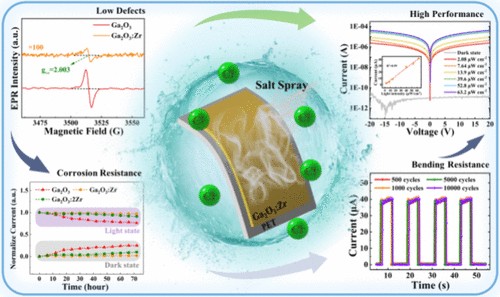
Flexible photodetectors have garnered significant attention in recent years due to their vast potential. Among these, amorphous Ga2O3 (a-Ga2O3) stands out as a highly promising candidate for flexible solar-blind ultraviolet photodetectors, owing to its wide band gap, low-temperature fabrication advantages, and exceptional stability under extreme conditions. However, the fabrication of a-Ga2O3 inevitably introduces oxygen vacancy (VO) defects, leading to declined photodetection performance and compromised corrosion resistance. In this study, we developed a zirconium (Zr) self-compensation doping strategy with concentration optimization to suppress VO defects, thus enhancing the optoelectronic performance and durability of flexible a-Ga2O3 photodetectors. The introduction of Zr significantly eliminated intrinsic VO defects in Ga2O3 films, lowering the dark current by over 3 orders of magnitude from ∼10–8 to ∼10–11 A and reducing the response time by a factor of 50, achieving a response time of 6 μs. The detectivity of the optimized devices reached a high level of 3 × 1014 Jones, indicating exceptional sensitivity to ultraviolet light. Durability tests further demonstrated that the optimized devices exhibited outstanding mechanical robustness, maintaining over 95% of their initial performance after 10,000 bending cycles, and stable photodetection performance even under harsh salt spray conditions for 72 h. This work provides an effective solution for developing high-performance flexible photodetectors tailored for wearable devices and applications in harsh environments.
Conclusion
This study developed a high-performance, flexible, and corrosion-resistant a-Ga2O3 photodetector by introducing Zr self-compensation doping and optimizing the concentration strategy. Zr self-compensation doping minimized oxygen vacancy defects in Ga2O3 films, resulting in a three-order magnitude reduction in dark current from 10−8 to 10−11 A. Additionally, the Ga2O3:Zr photodetectors exhibited a 50-fold reduction in response time, with rise and decay times of 14 and 6 ms, respectively, compared to undoped Ga2O3 photodetectors. These enhancements led to superior sensitivity, achieving a responsivity of 65.2 A/W, detectivity of 3 × 1014 Jones, and a phototo-dark current ratio exceeding 2.79 × 106. Furthermore, The Ga2O3:Zr photodetectors also exhibited remarkable mechanical robustness, maintaining a stable photoresponse under varying bending angles and after 10,000 large-angle bending cycles, making them ideal for flexible electronics. These devices displayed excellent corrosion resistance, showing only 4% performance degradation after 72h in high-concentration salt mist, compared to 49% in untreated Ga2O3 photodetectors. These findings highlight the effectiveness of Zr self-compensation doping in overcoming critical challenges in developing durable, high-performance flexible photodetectors, paving the way for their use in harsh environments and wearable technology.
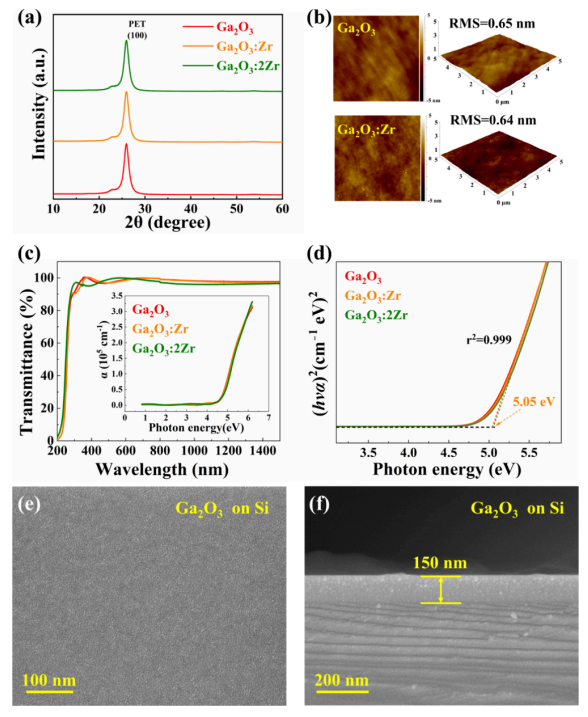
Figure 1. (a) XRD patterns of the pure Ga2O3, Ga2O3:Zr, and Ga2O3:2Zr films. (b) 2D (left) and 3D (right) AFM images of theGa2O3 and Ga2O3:Zr films deposited on the PET substrates. (c) Optical transmittance spectra (the inset images show optical absorption diagram) and (d) Tauc plots of the undoped Ga2O3, Ga2O3:Zr, and Ga2O3:2Zr films deposited on glass substrates. (e) Plane-view and (f) cross-sectional SEM images of the Ga2O3 film.
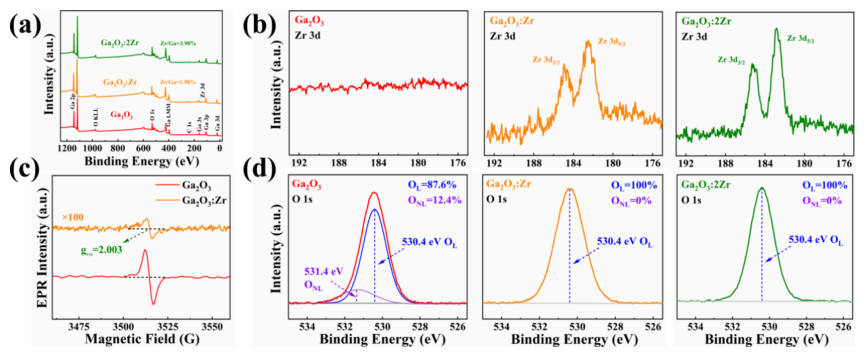
Figure 2. (a) XPS survey spectra, (b) Zr 3d, and (d) O 1s core-level spectra of Ga2O3, Ga2O3:Zr, and Ga2O3:2Zr films. (c) EPR spectra of the Ga2O3 and Ga2O3:Zr films.
DOI:
doi.org/10.1021/acsami.4c17584
